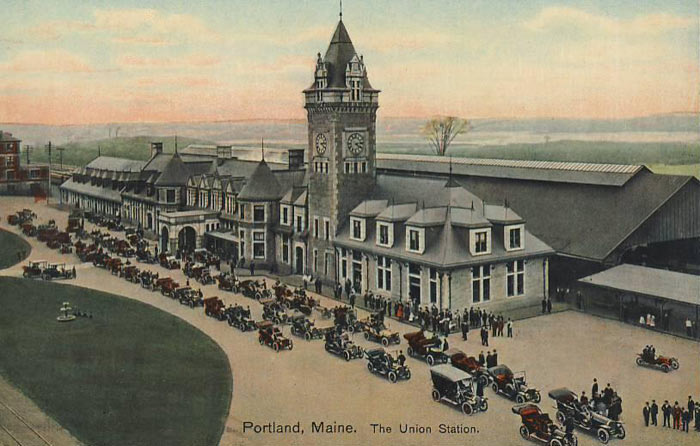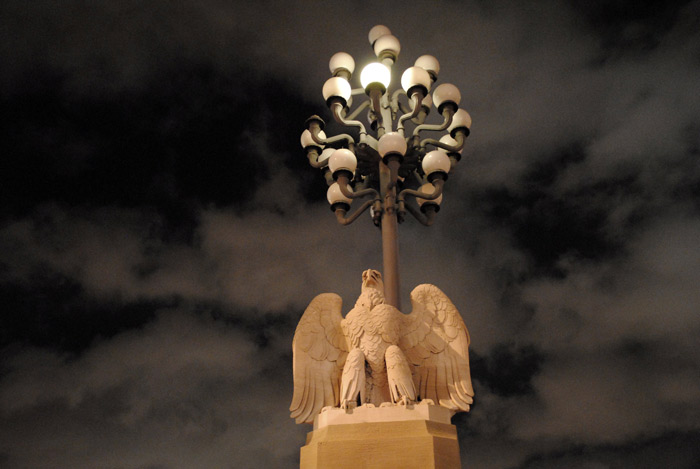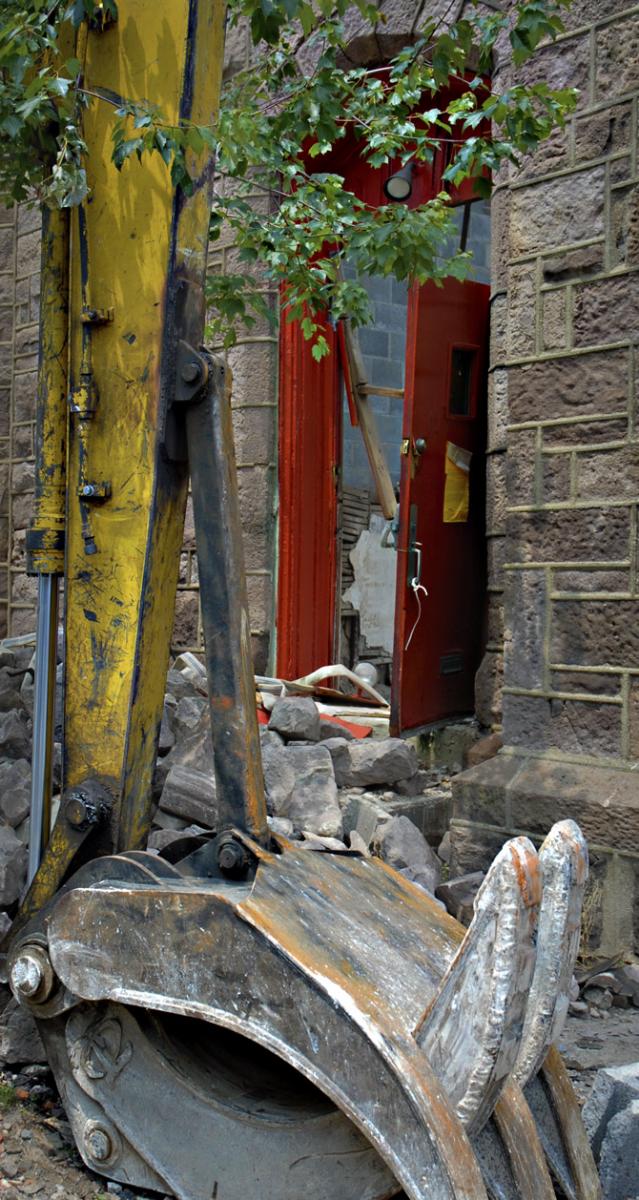Hole in the Clouds
Jan 10, 2010


The Grand Trunk Line went bankrupt in 1920. Cost overruns on its expansion to the West Coast stressed the company, and its route planning out west proved unfortunate, too far north to compete with the fledgling Canadian National Railroad, which eventually absorbed it. The Grand Trunk's U.S. lines were assigned to a holding company that used the Grand Trunk name, but they too declined and faded in the mid-twentieth century along with the railroad industry in general.
The Grand Trunk station in Portland, on India Street near the waterfront, was demolished in 1948. These pictures actually show a different Portland train station, Union Station on Congress Street near St. John Street, which handled southbound passengers and freight. Union Station opened in 1911 and was demolished in the1960s to make way for the I-295 highway.
Portland lost an elegant building that day--the current Amtrak station is basically just a corner of the bus station lobby--but by all accounts, the destruction awakened people to the importance of historic preservation. And though it couldn't have been foreseen in the 1960s, when urban renewal was thought to lead to future glory for America's cities, Portland's old buildings and cobblestone streets have turned out to be what saved this town--people have learned to make money off of "quaint."
Portland
vintage
Maine
railroad
demolition
Union Station
train
Jan 20, 2012
 A pair of these eagles guarded the entrance to New York City's Penn Station until 1963, when the old station was demolished. The Pennsylvania Railorad then donated them to Philadelphia, where they were placed at the end of the Market Street Bridge in front of Thirtieth Street Station.
A pair of these eagles guarded the entrance to New York City's Penn Station until 1963, when the old station was demolished. The Pennsylvania Railorad then donated them to Philadelphia, where they were placed at the end of the Market Street Bridge in front of Thirtieth Street Station.
As for most of the lightbulbs burning out and going unreplaced, that's a Philadelphia thing.
demolition
statue
Penn Station
30th Street Station
Market Street Bridge
eagle
urban decay
(Image credit: Julia Rowe, via PicturePhilly)
Apr 25, 2012
 Where this building now almost stands and in the streets around it, back in the day, the neighborhood kids used to be so bold and bad that the parish priest described them as children who'd steal a chain from right out of the devil's pocket. And so this part of the neighborhood got its name, Devil's Pocket, which was home to poor people, of course, mostly Irish immigrants.
Where this building now almost stands and in the streets around it, back in the day, the neighborhood kids used to be so bold and bad that the parish priest described them as children who'd steal a chain from right out of the devil's pocket. And so this part of the neighborhood got its name, Devil's Pocket, which was home to poor people, of course, mostly Irish immigrants.
A generation or two later, a bunch of the little old houses in Devil's Pocket were torn down to build a parking garage, apparently intended for employees of the old Graduate Hospital. Most of that hospital is long gone, and now, in the spring of 2012, the wrecking ball has come for the derilict parking garage.
It sounds a little cheeky, but by this time next year, there will be fancy new condos right here in the Devil's Pocket. And the wrecking ball will toll for some other something.
cityscape
streetscape
demolition
Philadelphia
construction
neighborhood
Graduate Hospital
urban decay
May 29, 2012

The machine that's demolishing Mt. Olive AME Church in the neighborhood is something you can rent in New Jersey. The jaws at the business end of the thing are heavy-duty grapples; you rent a regular excavating machine on caterpillar treads, remove its digging bucket, and pin on the grapple. The two-tined jaw opens and closes against the stationary three-tined jaw, which is reinforced, as seen here, with a rod called, appropriately enough, a stiff arm.
The cultural and economic forces that are demolishing Mt. Olive AME Church and a whole host of other churches in the neighborhood are something else again. These church buildings, many of them built from stone like this one, have sat here for a hundred years or so, sometimes changing denominations as the nearby population changed. The latest wave of immigrants to the neighborhood doesn't seem very churched at all, and so the old buildings get put on the market. Developers snatch them up and tear them down for a chance to build several new houses at once, in a part of the city that's already densely built. New houses--row houses--sell readily here to people who want to walk to work and/or to stores and restaurants. The new residents evidently are not interested in walking to church.
Soon, the excavator and its grapple will be loaded on a truck to go back to the heavy equipment lot in New Jersey, and we'll see five three-story row houses rise up on this lot, with squared-off bay windows and ten-year tax exemptions.
demolition
Philadelphia
work
neighborhood
church
heavy machinery
history
demographic change
Mt. Olive AME Church




